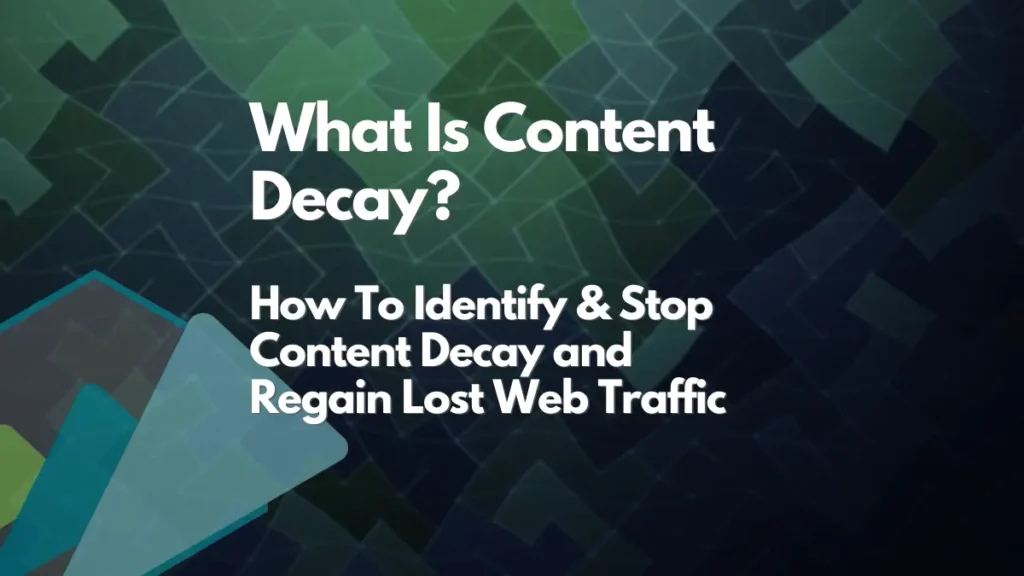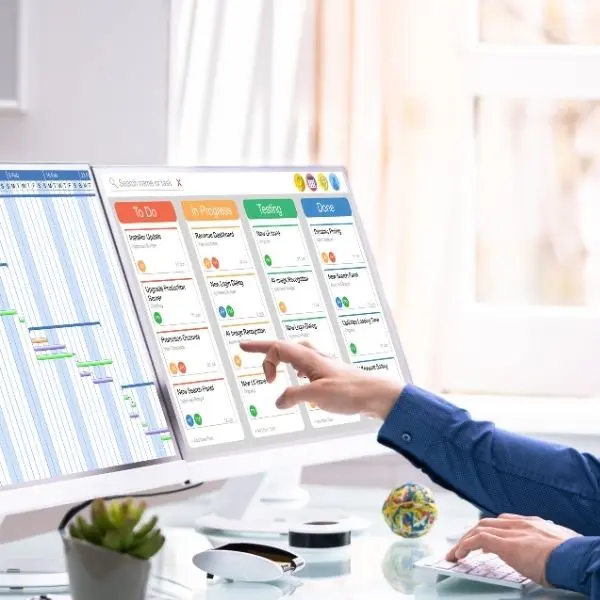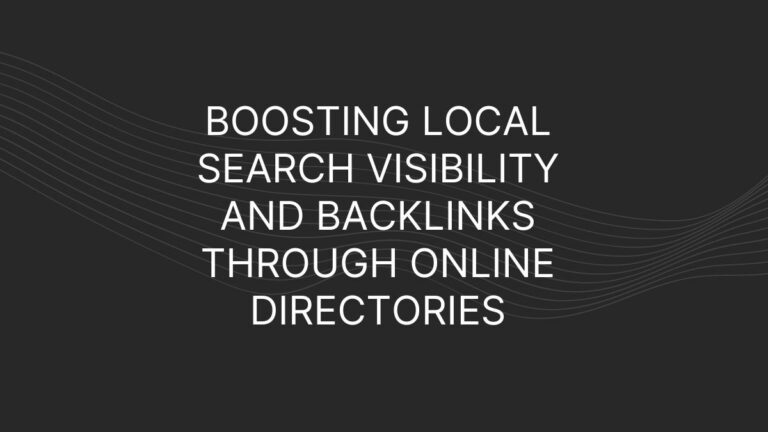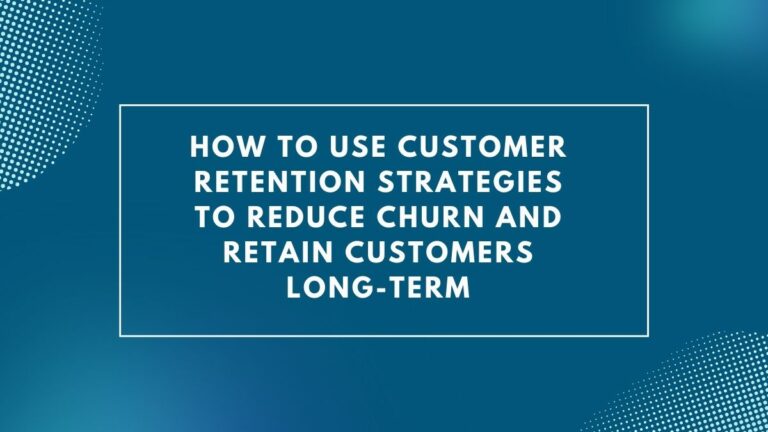
What Is Content Decay? How To Identify & Stop Content Decay and Regain Lost Web Traffic
Content Decay: Definition and Importance
A subtle yet significant challenge facing content marketers and website owners is content decay. This phenomenon refers to the gradual decline in search engine rankings, organic traffic, conversion rates, and backlinks over time. Search engines like Google are always updating their algorithms, and competitors are constantly publishing new content.
This means that content that used to rank high may need some help staying in its position. If you don’t update old content, your website may become harder to find, which can lead to a lower search engine ranking. In turn, this could reduce your sales and profits.
Understanding Content Decay: A Gradual Process
Content decay typically occurs gradually, often going unnoticed in the initial stages. As your focus shifts towards new content creation, subtle traffic declines in older pieces may be masked. However, the gradual traffic loss accumulates over time, significantly impacting your website’s performance.
Content decay can be caused by outdated information, shifts in user search intent, new competing content, and keyword changes. It erodes the hard-earned visibility your content once enjoyed, reducing its ability to attract backlinks and convert visitors effectively.

The Importance of Addressing Content Decay
Ignoring content decay can have far-reaching consequences for your business. To stay relevant and authoritative, make sure to update and optimize your content regularly for search engines and users. This erosion in authority can lead to a noticeable drop in search engine rankings and a subsequent decline in organic traffic.
Lower traffic translates to fewer leads, conversions, and sales. Additionally, when searchers encounter outdated or irrelevant content, they are more likely to leave the page, resulting in a higher bounce rate and further worsening the decline.
Content decay can diminish your brand’s credibility and authority. Inconsistent or outdated information may make visitors perceive your site as less trustworthy, impacting customer perception and loyalty.
Identifying and Understanding Decaying Content
Recognizing decaying content is a pivotal step in ensuring your digital assets maintain relevance and value. With the right tools and metrics, you can identify and address content decay before it significantly impacts your website’s performance.
Content Audit Guidelines

Tools to Use: To uncover content decay, leverage data from:
- Google Analytics and Google Search Console: Track traffic trends, analyze clicks and impressions, and compare metrics over time.
- Revive: Specialized software for content decay monitoring that helps detect declining posts.
- Ahrefs and Semrush: Identify keyword performance shifts, track backlinks, and monitor competitors.
Key Metrics:
- Organic Traffic: Examine traffic trends over time to detect a decline in visitor count.
- Click-Through Rate (CTR): Assess CTR changes in your search results.
- Impressions: Track impressions to understand if your content appears less frequently in search results.
- Ranking Position: Compare current rankings to historical positions for crucial target keywords.
- Conversion Rates: Review declining conversions to understand the business impact of decaying content.
Causes of Content Decay
Once you’ve identified potentially decaying pages, it’s essential to investigate what might be causing the decline. Common reasons include:
- Outdated Facts/Statistics:
If your content contains old or inaccurate data, it becomes less relevant. This affects both user experience and search engine trust.
- Keyword Shifts or Missing Keywords:
Search behavior changes over time. Newer search terms may now overshadow keywords that performed well years ago.
- New Competing Content:
Competitors can publish updated, authoritative content that surpasses your existing material, pushing it down the search rankings.
- Lack of Topical Depth or Changing Search Intent:
- Thin or shallow content often fails to meet users’ growing needs for comprehensive information.
- Changes in search intent (e.g., users now seeking tutorials instead of product reviews) can also lead to content mismatches.
Strategies to Refresh and Optimize Content
Maintaining and improving your website’s content is essential to retaining and increasing traffic. Here are some strategic approaches to refresh and optimize your existing content:
Updating Old Content
A significant part of maintaining relevance is regularly reviewing and updating older blog posts:
- Data and Links: Ensure data is current and accurate. Broken or outdated links should be fixed or replaced. This applies to both internal links (linking within your own pieces of content) and external sources.
- Multimedia Relevance: Optimizing images, infographics, and videos must remain pertinent to the topic and context. Replace old images with high-quality, fresh visuals to appeal to modern audiences.
- New Information: Add fresh examples, case studies, and statistics to reinforce the content’s validity. Review and refine metadata (title tags, meta descriptions) and alt tags to align with changing search intent.

Adding Value Through Expansion
Another powerful way to refresh content is by expanding on existing material:
- Fill Gaps: Using tools like AnswerThePublic, identify gaps in your SEO content that can be filled by answering new, frequently asked questions. Expand sections or add entirely new ones to make your content comprehensive.
- Topical Depth: Create new FAQs, case studies, or sections to explore topics in greater depth. Topical depth helps you capture different target audience segments and strengthens your authority.
Merging Cannibalizing Content
Keyword cannibalization occurs when multiple pages on your website compete for the same search queries:
- Consolidate Topics: Review older posts covering similar topics and merge them into a comprehensive resource. Doing so will strengthen the merged page’s ranking while reducing competition between your own pages.
- Redirects: Set up 301 redirects from older pages to the newly consolidated content. This will pass any existing link equity and ensure a smoother user experience.

Repromoting and Refreshing
After updating or merging your content, don’t forget to get the word out:
- Social Media and Newsletters: Refresh social media campaigns, email newsletters, or other channels promoting your updated content.
- Featured Snippets and “People Also Ask”: Optimize content for these special search features to increase visibility. Clear, concise answers formatted properly can attract valuable organic traffic.
Refreshing your content with these strategies will help your site stay relevant, increase traffic, and enhance user engagement.
Preventative Measures to Avoid Content Decay
Proactively preventing content decay is crucial for maintaining your site’s relevance and authority. Here are three key strategies:
Evergreen Content Creation
Creating evergreen content is about focusing on topics that will remain relevant long-term, requiring minimal updates. These pieces should cover foundational concepts, processes, or how-to guides that can withstand shifting trends:
- Foundational Concepts: Identify core principles or practices within your industry that are unlikely to change dramatically.
- Timeless Advice: Provide practical tips or tutorials that will consistently help your audience solve problems.
- Updates When Necessary: Although evergreen content doesn’t require frequent changes, monitor it for any new trends or technological changes that may necessitate updates.
Content Calendar Management
Managing a content calendar helps you maintain regular content refreshes and avoid letting posts decay:
- Scheduled Reviews: Plan regular reviews for your existing content, focusing on high-traffic pages. A quarterly or biannual review is often effective.
- Content Updates: Schedule updates for older posts, particularly those showing signs of traffic decline. Ensure the information remains relevant to the current search intent.
- New Content Production: Use the calendar to plan the creation of fresh, high-quality content that complements your older posts, keeping the whole site vibrant.

Backlink Building
Strategic backlink building is essential for improving your site’s authority and rankings. High-quality backlinks will help prevent decay by sustaining your pages’ competitive edge:
- Targeted Outreach: Engage in guest posting campaigns, offer expert opinions for quotes, and connect with industry influencers to gain backlinks.
- Internal Links: Build an internal linking structure that passes link equity from high-authority pages to other valuable resources on your site.
- Broken Link Building: Find broken links on external sites that used to point to similar content and offer your refreshed material as a replacement.
These proactive measures will help safeguard your website against content decay by ensuring your site remains authoritative, relevant, and optimized for sustained search engine visibility.
Summary of Strategies

How search engines view content constantly changes, and ignoring content decay can significantly impact your website’s performance. It’s essential to identify declining content early through regular audits, using tools like Google Analytics and Search Console to catch traffic, ranking, and impressions decreases.
Once identified, refreshing your content with strategies like updating old data, improving multimedia, and addressing metadata will help align it with current search intent. Adding value through expanded sections or filling content gaps keeps your pages relevant and comprehensive while merging cannibalizing content enhances their effectiveness by consolidating authority.
Preventative measures like evergreen content creation and targeted backlink building ensure your site remains authoritative. A well-maintained content calendar enables timely reviews, keeping your digital presence optimized.
Wrap Up
To keep your website performing at its best, regularly audit your content and implement these outlined strategies to refresh and optimize older pages. Addressing content decay early ensures your site stays relevant, ranks higher, and continues to draw consistent traffic. Schedule your content audits today and start optimizing to deliver sustained value to your audience.
Ready to Grow Your Search Engine Results?
Let Digital Results assist you in your SEO strategy and help
deliver the search engine results you need.






